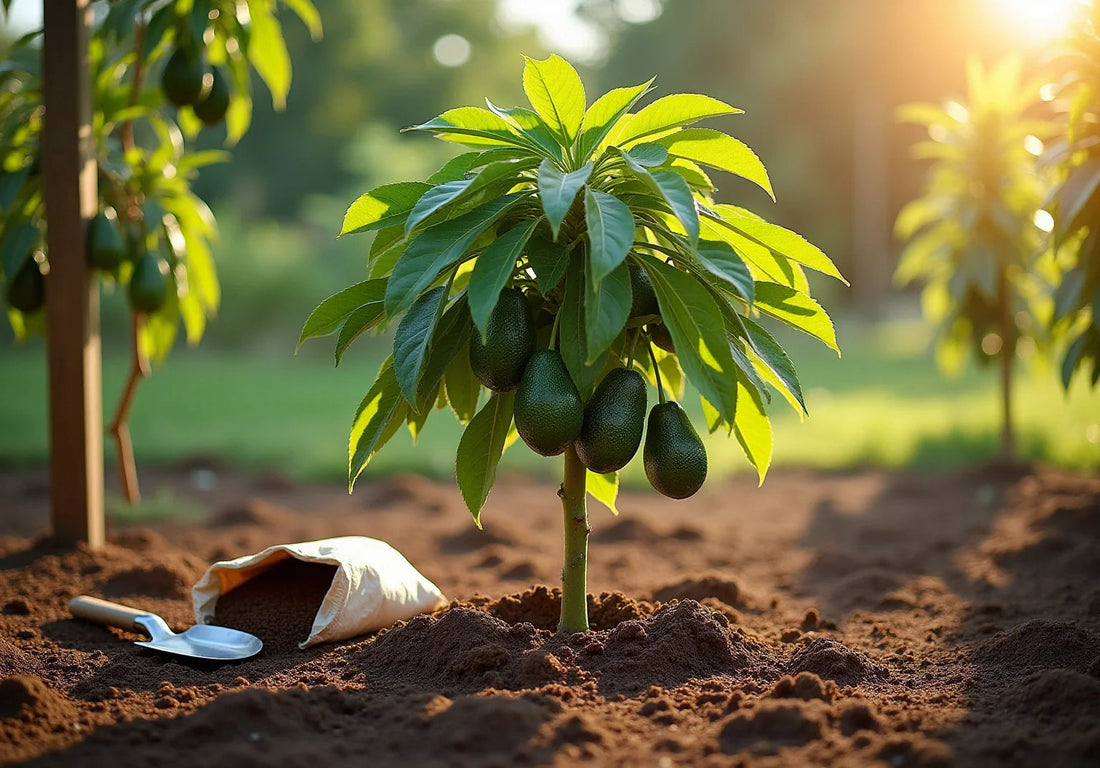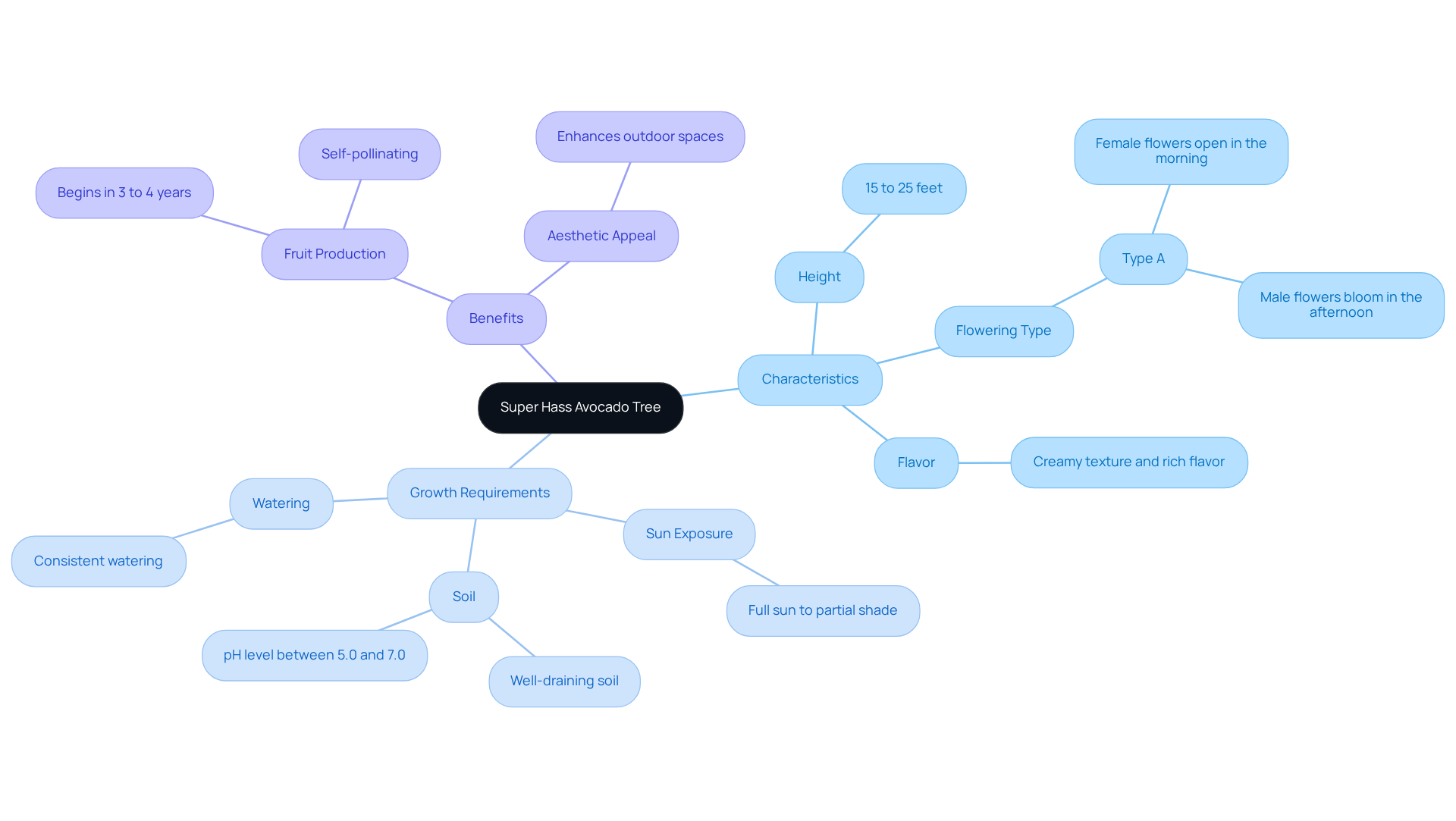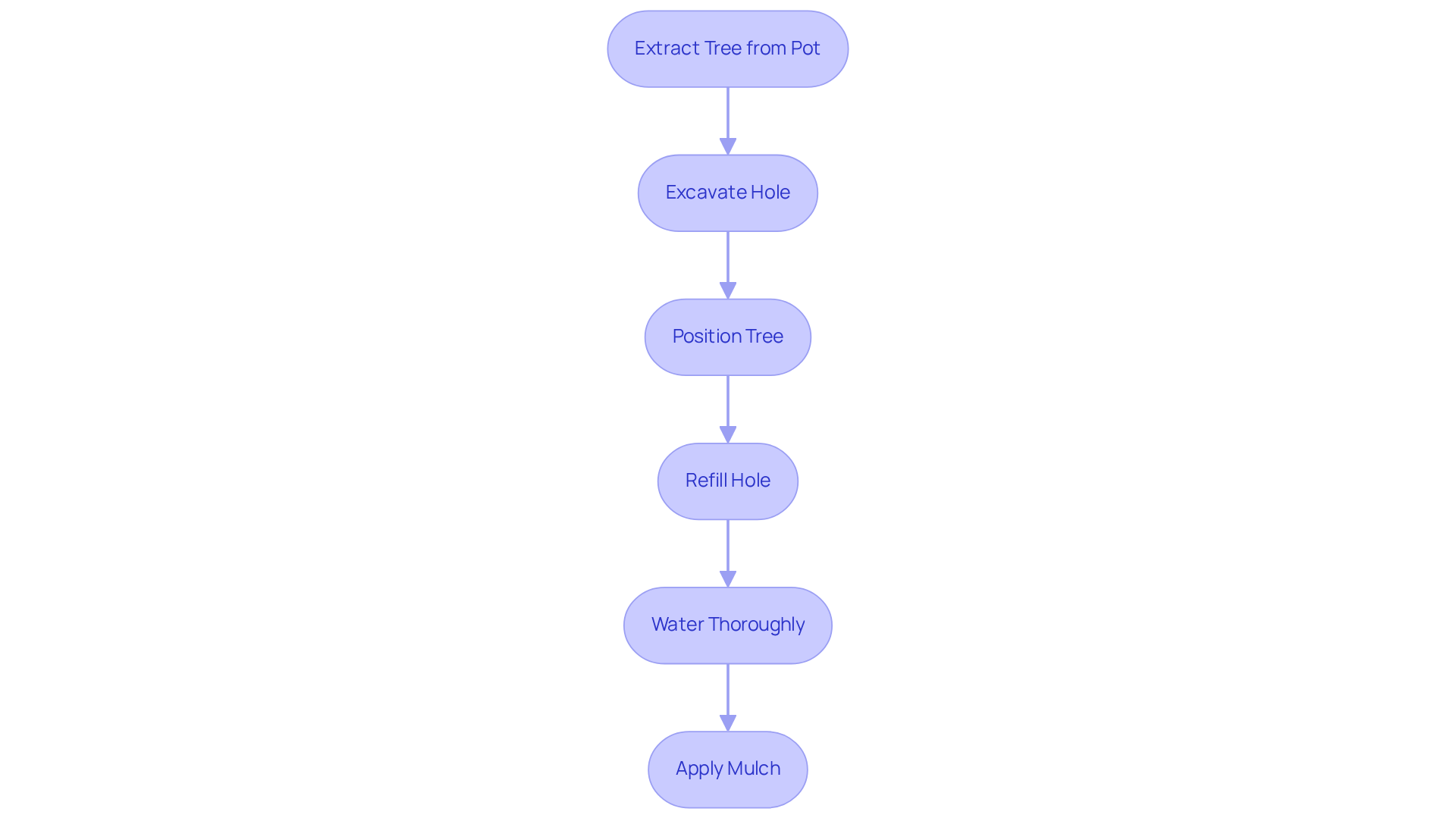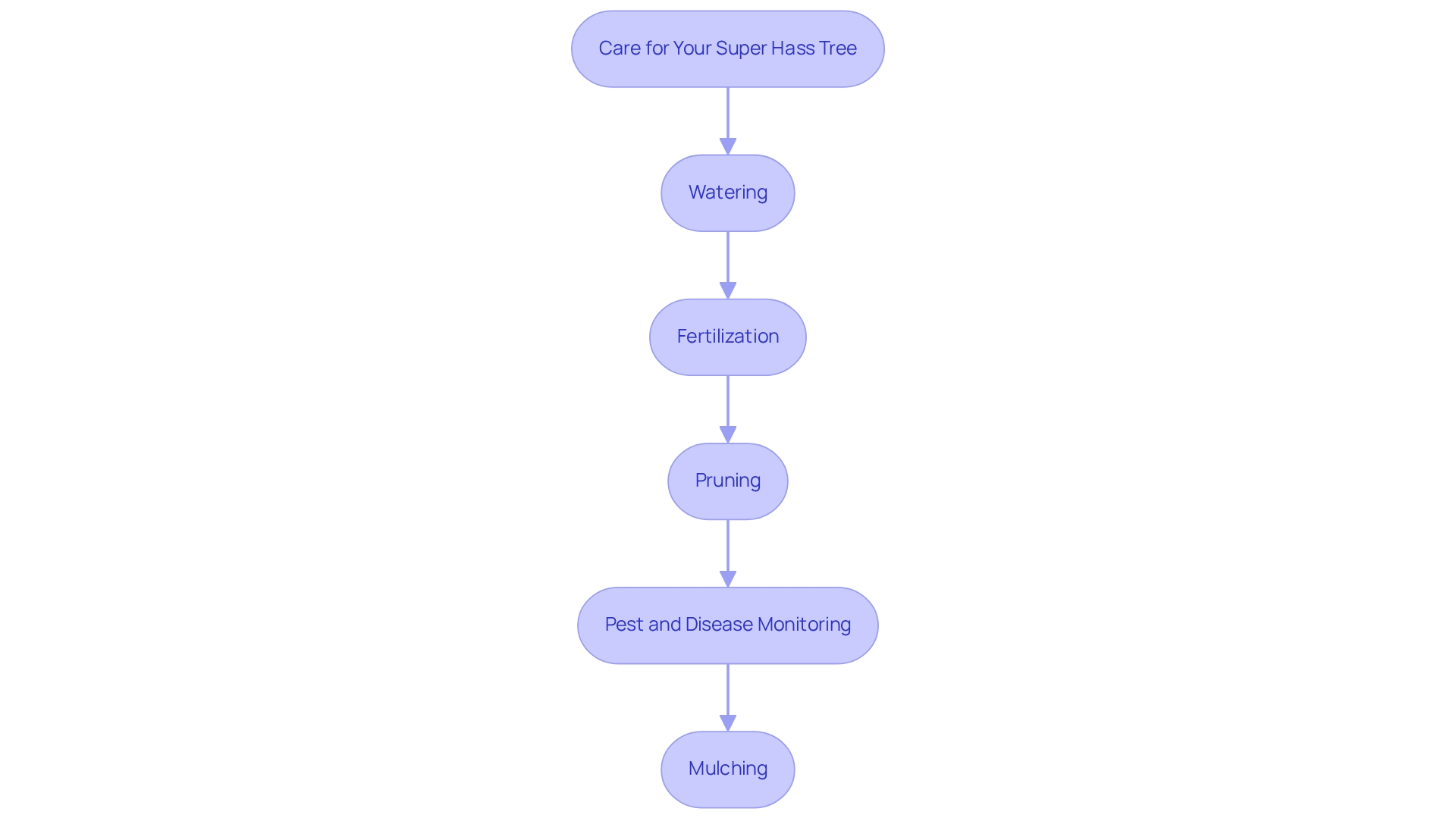
Master the Super Hass Tree: Steps for Successful Growth
Share
The Super Hass avocado tree is a gardener's dream, merging the rich flavor of the classic Hass with the benefits of self-pollination and faster fruit production. For those eager to cultivate this remarkable hybrid, understanding its specific needs—from sunlight and soil to watering and fertilization—is crucial for achieving a bountiful harvest. However, many aspiring green thumbs encounter challenges in nurturing these trees, leading to the question: what are the best practices to ensure the Super Hass thrives in your garden?
🥑 Want to grow a Super Hass Avocado Tree in your garden?
Buy Super Hass Tree or explore Hass Avocado Trees Collection at Everglades Farm - shipped directly from Florida.
1. Understand the Super Hass Avocado Tree
The Super Hass tree, which is a hybrid of the renowned Hass variety, is celebrated for its creamy texture and rich flavor. This plant typically reaches heights of 15 to 25 feet and thrives in warm climates, making it an excellent choice for home gardeners. As a Flowering Type A plant, its female flowers open in the morning, while male flowers bloom in the afternoon, facilitating self-pollination. This characteristic is particularly advantageous for home gardeners, as it enhances the likelihood of fruit production without the necessity for another variety.
To ensure successful growth, the super hass tree requires:
- Full sun exposure
- Well-draining soil
- Consistent watering
It flourishes in tropical climates, preferring mild temperatures and a soil pH level between 5.0 and 7.0. Regular care, including proper drainage—especially when cultivated in containers—supports the plant's health and productivity. Under optimal conditions, the super hass tree can begin producing fruit in just 3 to 4 years, making it a valuable addition to any home garden.
Embracing the joy of gardening with this plant not only enhances outdoor spaces but also yields delicious fruit for years to come. By understanding the specific needs and benefits of the super hass tree, gardeners can cultivate a thriving environment that maximizes both aesthetic appeal and fruit production.

2. Select the Right Location and Prepare the Soil
To ensure your super hass tree thrives, it is essential to select a location that receives at least 6 hours of direct sunlight daily. Avocado plants, including the super hass tree, flourish under full sun exposure, so avoid areas with heavy shade or near structures that may block sunlight.
The ground for a super hass tree should be well-draining, ideally sandy or loamy, with a pH between 6 and 6.5. Before planting a super hass tree, enrich the soil with organic matter, such as compost, to improve fertility and drainage. If your soil is heavy clay, consider planting a super hass tree on a mound to enhance drainage.
Furthermore, ensure adequate air circulation around the super hass tree to prevent waterlogging, which can adversely impact its growth. Excavate a hole for the super hass tree that is twice as wide and deep as the root ball of your plant to allow for proper root expansion.
Remember to water the super hass tree thoroughly once a week, especially during hot, dry conditions, to keep the ground moist but not saturated. For a more varied garden, consider planting passion fruit vines nearby, which thrive in similar conditions, or soursop plants that also require well-draining soil and full sun. This approach can enhance your garden's productivity and provide a variety of fruits.

3. Plant the Super Hass Tree Correctly
To successfully plant your super hass tree, follow these essential steps:
- Gently extract the super hass tree from its pot, being cautious not to harm the underground parts.
- Excavate a hole that is as deep as the ball of soil and just wide enough to place the plant into it without disturbing the underground structure.
- Position the super hass tree in the middle of the hole, ensuring that the top of the ball of roots is even with the surrounding earth; this is crucial, as improper ball placement can hinder the super hass tree's growth.
- After placing the tree, refill the hole with the initial earth, carefully compacting it to remove air pockets that could affect plant establishment.
- Water the plant thoroughly after planting to help settle the soil around the roots, promoting good contact.
- Finally, apply a layer of mulch around the base of the super hass tree to retain moisture and suppress weeds, ensuring it is kept about 6 inches away from the trunk to prevent rot.
For optimal growth, consider using a professional-grade fertilizer formulated for these plants, which will provide essential nutrients like nitrogen and zinc to support vigorous development. Avoid common errors such as planting too deep or using low-quality soil, as these can significantly affect the plant's health and productivity. Remember, the optimal planting period for these plants is from March to June.

4. Maintain and Care for Your Super Hass Tree
To ensure the health and productivity of your Super Hass avocado tree, it is essential to follow these care guidelines:
-
Watering: Regularly hydrate the plant to keep the soil consistently damp but not saturated. Adult avocado plants generally require approximately 2 to 3 inches of water weekly, depending on climate and soil type. Deep watering once a week is typically sufficient, allowing the top 2-3 inches of soil to dry out between waterings to prevent root suffocation.
-
Fertilization: Apply a balanced fertilizer designed for fruit plants every 6-8 weeks during the growing season. Avocado plants are heavy feeders and require nitrogen, zinc, and other micronutrients, which are vital for their growth and fruit production.
-
Pruning: Conduct annual pruning during the plant's dormant growth period to promote lateral growth and enhance air circulation. It is important to remove any dead or crossing branches to maintain a healthy structure and prevent disease.
-
Pest and Disease Monitoring: Vigilantly monitor for common pests and diseases, such as root rot and Verticillium wilt. Prompt action is crucial; if you notice any signs of trouble, address them immediately to protect the plant's health.
-
Mulching: Apply mulch around the base of the plant, leaving 6 to 10 inches of space around the trunk. Proper mulching can increase feeder root mass and enhance the productivity of the plants.
By adhering to these guidelines, you can nurture a flourishing super hass tree that produces delicious fruit and enhances the beauty of your garden.

5. Troubleshoot Common Growth Issues
To effectively troubleshoot growth issues with your Super Hass avocado tree, consider the following strategies:
-
Yellowing Leaves: This often signals overwatering or nutrient deficiencies. Evaluate the moisture content and modify your irrigation timetable to guarantee the plant is neither too dry nor excessively saturated. Adequate drainage is essential; these plants flourish in well-draining soil to avoid root decay.
-
Lack of Fruit Production: Ensure your plant receives at least six hours of sunlight daily. Additionally, planting a Flowering Type B variety nearby can enhance pollination, increasing the likelihood of fruit set. Keep in mind that the super hass tree typically takes 3 to 4 years to bear fruit.
-
Stunted Growth: Unsuitable ground conditions can hinder growth. Amending the soil with organic matter can significantly improve fertility and promote healthier development. Avocado plants prefer mild temperatures and good drainage for optimal growth.
-
Pest Infestations: If you notice pests like aphids or spider mites, treat the affected areas with insecticidal soap or neem oil, both of which are effective natural remedies.
-
Watering Requirements: When planted in a 5.0" pot, these plants need about 0.8 cups of water every 9 days. Adjust your watering frequency based on environmental conditions to maintain healthy growth.
-
Fertilization: Consider using professional-grade fertilizers designed specifically for fruit plants to enhance growth and yield.
By implementing these solutions, you can help your super hass tree thrive and enjoy a bountiful harvest.
Conclusion
The journey of cultivating a Super Hass avocado tree is both rewarding and fulfilling, offering lush greenery alongside a bountiful harvest of delicious fruit. By understanding the specific needs of this hybrid variety—its preference for full sun, well-draining soil, and consistent watering—gardeners can create an ideal environment for growth. Implementing the right planting techniques and maintenance practices ensures that the tree thrives, producing fruit within just a few years.
Key practices include:
- Selecting the right location
- Preparing the soil
- Adhering to a proper watering and fertilization schedule
Regular care, including pruning and monitoring for pests and diseases, plays a crucial role in maintaining the health of the Super Hass tree. Troubleshooting common growth issues by adjusting care routines can further enhance the tree's productivity, ensuring it remains a vibrant part of any garden.
Ultimately, growing a Super Hass avocado tree transcends the immediate benefits of fruit production; it represents an investment in a sustainable and fruitful gardening experience. Embracing these best practices can lead to a thriving garden that brings joy and nourishment for years to come. For those ready to embark on this gardening adventure, the Super Hass avocado tree promises both beauty and bounty, making it a worthy addition to any home garden.
Grow Your Own Super Hass Avocado Tree Today!
Start your gardening adventure with Everglades Farm and enjoy the beauty and bounty of home-grown avocados.
🥑 Explore Hass Avocado Trees Collection
Frequently Asked Questions
What is the Super Hass avocado tree?
The Super Hass avocado tree is a hybrid of the Hass variety, known for its creamy texture and rich flavor. It typically grows to heights of 15 to 25 feet and thrives in warm climates.
How does the Super Hass avocado tree pollinate?
The Super Hass tree is a Flowering Type A plant, meaning its female flowers open in the morning and male flowers bloom in the afternoon, which facilitates self-pollination.
What are the ideal growing conditions for the Super Hass avocado tree?
The Super Hass avocado tree requires full sun exposure, well-draining soil, and consistent watering. It flourishes in tropical climates with mild temperatures and a soil pH level between 5.0 and 7.0.
How long does it take for a Super Hass avocado tree to produce fruit?
Under optimal conditions, the Super Hass avocado tree can begin producing fruit in just 3 to 4 years.
What type of soil is best for planting a Super Hass avocado tree?
The ideal soil for a Super Hass avocado tree is well-draining, preferably sandy or loamy, with a pH between 6 and 6.5. Enriching the soil with organic matter, such as compost, is recommended.
How much sunlight does a Super Hass avocado tree need?
A Super Hass avocado tree needs at least 6 hours of direct sunlight daily to thrive.
What should I do if my soil is heavy clay?
If your soil is heavy clay, it is advisable to plant the Super Hass avocado tree on a mound to enhance drainage.
How often should I water the Super Hass avocado tree?
The Super Hass avocado tree should be watered thoroughly once a week, especially during hot, dry conditions, to keep the ground moist but not saturated.
Can I plant other plants near the Super Hass avocado tree?
Yes, for a more varied garden, you can consider planting passion fruit vines or soursop plants nearby, as they thrive in similar conditions requiring well-draining soil and full sun.


